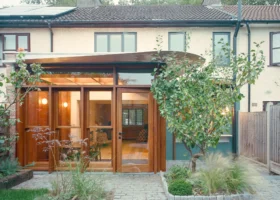- Plan ItBack
- Design ItBack
- Build ItBack
- Homes
- Products
- CostsBack
- Self Build Cost Calculator
Estimate your project costs instantly with Build It's interactive self-build cost calculator
Calculate Now - Costs & Finance
- Contracts & Warranties
- Build It Estimating Service
Get an accurate, detailed cost breakdown of your project
Submit plans
- EventsBack
- My Account
Q&As
What output do I need for my underfloor heating system?
Good morning.
I have been comparing heat outputs for different underfloor heating systems to accompany an air source heat pump as part of a major renovation as part of which we’ll install a high level of insulation/glazing.
We plan for the heat pump to be the primary heat source for the underfloor heating in a way that’s cost effective. However, on paper the heat outputs of the systems recommended to us by companies seem to vary a lot (eg between an in board and a self levelling compound system).
How can I pick my way through the different technical suggestions to work out what heat output I need?







































































































Hi Tom,
This is not a simple question but it is one that is being asked by many homeowners and is fundamental when it comes to specifying the design of the system correctly.
The main variable here is not the maximum heat output from the floor, as this will change as the flow temperature changes, and the flow temperature will change as the ambient temperature outside changes. A room by room heat loss calculation should be able to determine the heat loss of each room as well as the watts per square metre of floor. This figure is the worst case heat requirement at a pre determined outside temperature (usually somewhere between -1.2C and -3.9C depending on your geographical location and altitude). Therefore the design of the system should allow for the flow temperature to be high enough when the outside temperature is cold, and not so high when the outside temperature is not as cold.
That bit is fairly easy because most good air source heat pumps have a weather compensation setting for this exact issue. Where it gets complicated is with the makeup of the floor heating system. If you have a screed based system there will be more thermal mass and the reaction time of the floor may be very slow to heat up and also to cool down. Therefore, if it is cold outside overnight the flow temperature to the floor may increase, but it takes a number of hours for the floor to heat up enough. By the time it is warm, the ambient temperature outside is warmer so the floor is now too hot. It is therefore crucial to have a system that can accommodate the reaction time of the emitters.
Too little, and too much, thermal mass can be a design challenge, so it is best to specify the whole system and then make sure you have controls that help manage the heat. Pipe size and pipe spacing can affect the reaction time, and the loop length and floor finish will all have an impact, too. If the loops are too long, the resistance will be great and the harder the floor surface finish, the quicker the heat will transfer into the room. You may also need to monitor the behaviour of the system during the first season and then get it adjusted at the first service.
Best of luck with your project plans.
David Hilton (Expert in renewable heating technologies and director at Heat and Energy Ltd)
Thank you very much!